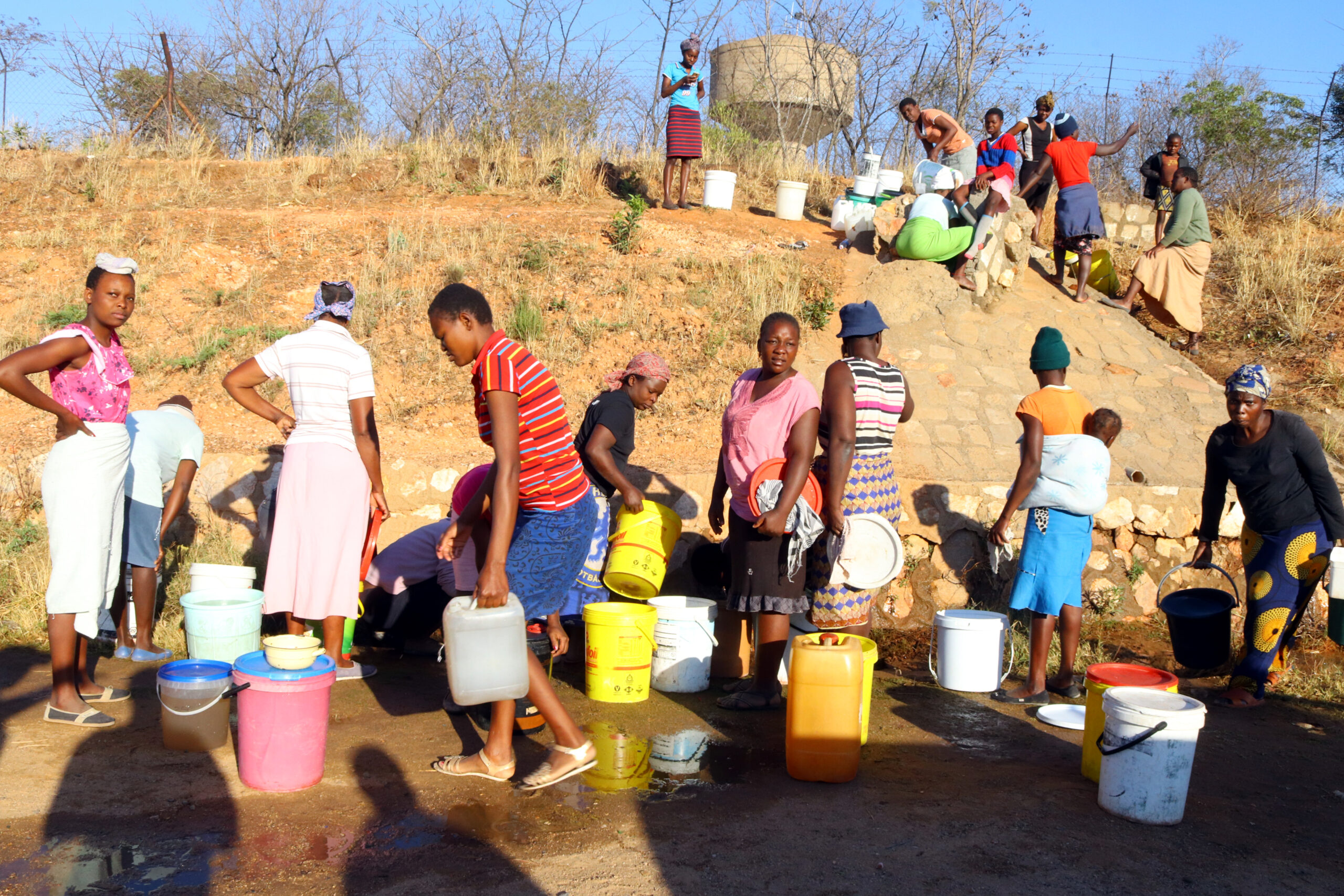BULAWAYO city councillors admit that the local authority is in a desperate situation with no solution in sight with regards to the provision of water to residents who are going for days without the precious liquid.
Last year Zimbabwe experienced an El-Nino induced drought that resulted in some water bodies drying up and loss of livestock.
A 144-hour water shedding timetable to ensure residents get supplies once a week, for 12 hours on each day, has been suspended. Only industrial areas and the central business district (CBD) are spared water shedding.
As recent as Monday, the Bulawayo City Council (BCC) failed to restore water supplies to all residential areas “due to low reservoir levels,” Town Clerk Christopher Dube said in his daily provisional water supply notice.
Bulawayo Deputy Mayor Mlandu Ncube told The NewsHawks on Tuesday that the local authority was in a water crisis management dilemma while also ruling out the normalisation of water supplies until rains fill up the dams.
“We have a huge crisis,” Ncube said.
“We are in a fix insofar as water provision is concerned. The situation is desperate. We are trying everything to provide water even through use of bowsers but that is just a drop in the ocean.”
Council has five water bowsers, four of which have a carrying capacity of 18 000 litres while one has a 10 000l-litre capacity.
Umzingwane, Upper Ncema, Lower Ncema dams, which supply the city with water alongside Inyankuni and Insiza dams, have been decommissioned due to low water levels.
In April, the government availed ZW$10,6 million to the Zimbabwe National Water Authority (Zinwa) to rehabilitate 15 boreholes at the Nyamandlovu Rochester Aquifer to increase water obtained from the aquifer to eight million litres per day from an average three million litres.
The rehabilitation of boreholes and drilling of 20 others at Epping Forest in Nyamandlovu to ease the water crisis is ongoing.
“We have to appreciate private players that have come on board to assist in the provision of water to city residents. We have churches that have either drilled boreholes or are allowing residents to fetch water from their premises. Without that kind of assistance, this crisis could be a lot worse,” Ncube said.
Council in partnership with private organisations has also installed water kiosks—mounting 15 000-litre tanks at 15 high-lying areas. The kiosks are fed by water bowsers.
A number of individuals and private players are cashing in on the crisis to sell borehole water— US$3 for 250 litres, US$28 for 2 500 litres and US$43 for 5 000 litres.
The Deputy Mayor argued that the city council could not be faulted for failing to find lasting solutions to the water crisis as he blamed the central government for failing to construct dams as mandated by the Water Act.
“The provision of bulk water rests with the central government. Our duty is to provide potable treated water to residents. Normally, we don’t sink boreholes, but we do have partners to help us do that,” Mlandu said as he also ruled out council drawing water from decommissioned dams as suggested by government consultants.
“Firstly, it’s a very costly exercise. Secondly, you cannot disturb the ecosystem and the aquatic life there. The only solution is for Bulawayo to be declared a water crisis area to allow us to mobilise resources to undertake water alleviation projects to meet the needs of residents.”
An amendment of the 1976 Water Act provides for the central government to be responsible for raw water sources for local authorities through construction for dams.
No dam has been constructed for Bulawayo since 1975.
Bulawayo water supply dams were constructed by the Rhodesian settler regime. Lower Ncema was built in 1943 and Upper Ncema 1974, Inyankuni (1965), Umzingwane (1956) and Insiza (1975).
In 1992, when the city’s water supplies ran dry during the country’s worst ever drought, 77 boreholes in high water-yielding aquifers were sunk.
As if the water crisis is not enough, a diarrhoea outbreak linked to water challenges that claimed 13 lives June is spreading, adding more woes to the already stretched council health department amid Covid-19.
“The diarrhoea outbreak was inevitable in light of water challenges. We have our health department dealing with that through its epidemic preparedness and response team, but the challenge is that this is the same team responding to Covid-19,” Ncube said.

